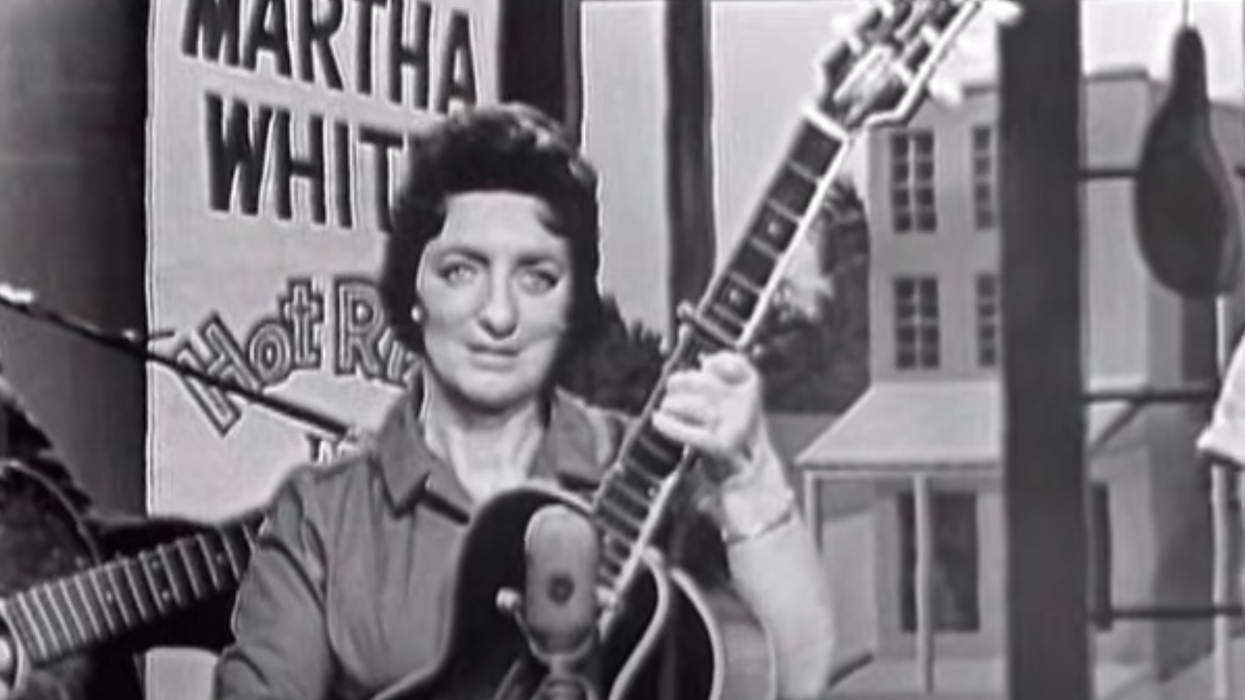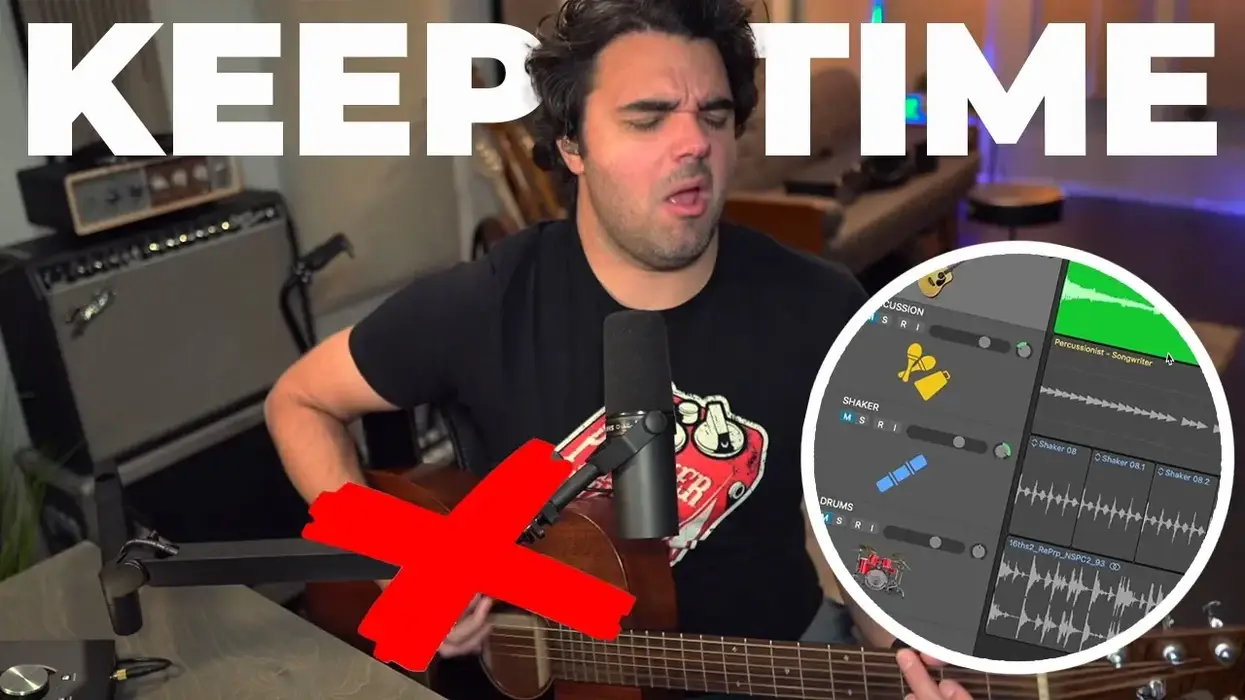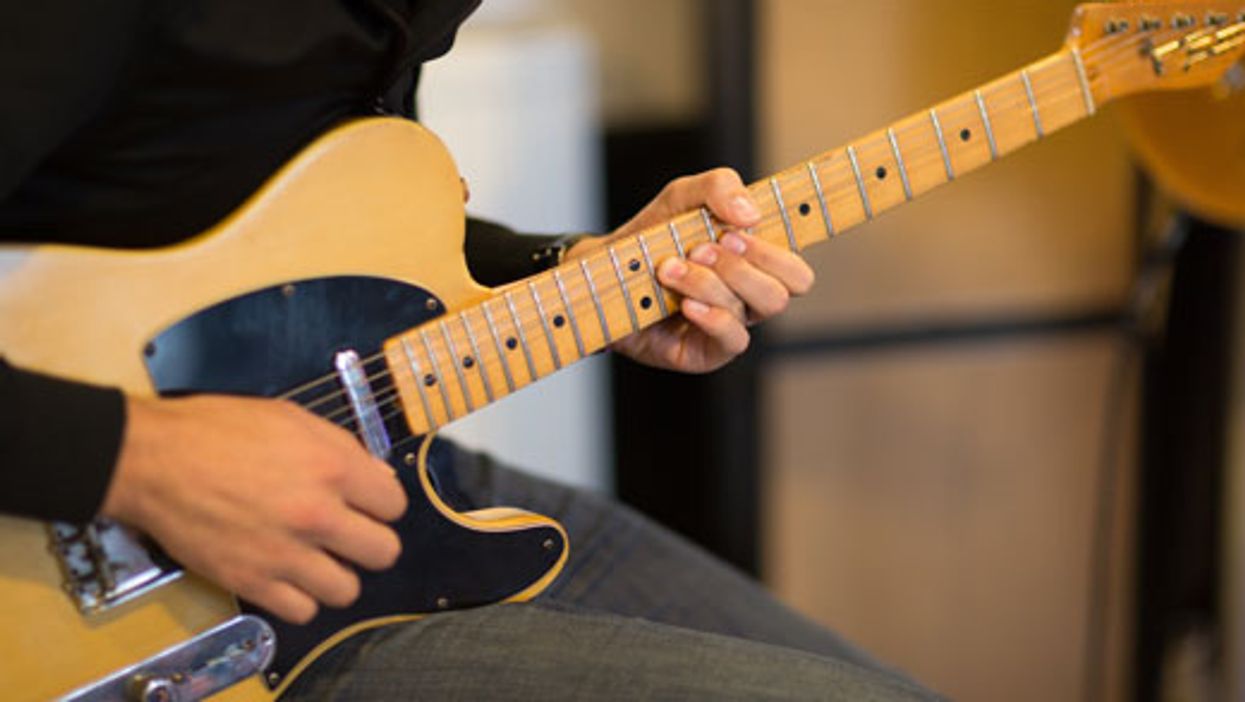Strum chords and pick melodies at the same time! While Carter-style picking is most closely associated with country legend Maybelle Carter, the technique, and variations thereof, can be heard in the music of the Beatles, the Rolling Stones, Neil Young, and even progressive pioneers Yes.
What Is Carter Picking?
Carter-style picking—aka the Carter Family Style, the Carter Scratch, the Maybelle Carter Strum, and the thumb brush, among others—is a style of guitar playing popularized by Maybelle Carter. Simply put, while holding down a chord, the higher strings are strummed while a melody is picked out on the lower strings. It's been debated as to whether strumming the lower strings and putting the melody on the high strings is considered Carter picking. Since we're going beyond the traditional, I'll allow it.
Boom-Chuck Basics
Before we get into more challenging melodies, it's important to be able to play a basic "boom-chuck" strum (Ex. 1), which alternates the root and 5 of any given chord, with minimal movement from the left hand.
Ex. 1
Once you have the boom-chuck mastered, strive to add scale movement or walking bass lines, as seen in Ex. 2.
Ex. 2
When you're comfortable with scales, try adding chromatic movement to your bass lines. This will spice up your playing considerably (Ex. 3).
Ex. 3
Adding Melodies
Now that you possess a solid bass-strum foundation, it's time to add melodies, and we might as well start with the most well-known song from Maybelle Carter's repertoire: "Wildwood Flower" (Ex. 4). As you can see and hear, only the top three notes of both the C and G chords are strummed, usually on beat 2, while the single-note melody is picked out on the lower strings. This is quintessential Carter picking, but the variations are endless.
Ex. 4
Mother Maybelle Carter - Wildwood Flower LIVE!
Ex. 5 was inspired by the Beatles' "Norwegian Wood," which is not only in 3/4 time but is also in the Mixolydian mode, as it emphasizes the V chord, D, in the key of G. Note that the first time through the chords are only strummed as a quarter-notes, the second time the chords get eighth-note strums.
Ex. 5
Norwegian Wood (This Bird Has Flown)
Intriguingly, Donovan's "Catch the Wind" predates "Norwegian Wood" by a few months, conceivably providing Lennon with the stylistic inspiration, as it has for Ex. 6. Pay attention to the fact that the pinky stays consistently on the 3rd fret of the 1st string.
Ex. 6
Donovan - Catch the wind
Ex. 7 comes to us from Joan Baez's version of "The Lily of the West." In this example, an Em chord is strummed throughout, while the melody moves all the way up to the 3rd string, thinning out the strum a bit, yet still implying Em. You may need to spend extra time practicing the hammer-ons and the slide to keep them as robust as the picked notes.
Ex. 7
JOAN BAEZ ~ The Lily Of The West ~
Ex. 8 is an usual variation that can be heard on the Rolling Stones' "Country Honk." A boom-chuck strum alternates with a thick, three-note melody/bass line of sorts. I recommend isolating and repeating the D chord measures, as your pinky is sure to get a workout there.
Ex. 8
Country Honk (Remastered 2019)
As I mentioned earlier, traditional Carter picking emphasizes melodies in the bass while strumming the higher strings. Still, that doesn't stop Neil Young from reversing the technique—putting melodies on top while keeping fat, full chords on the bottom. You'll need to fret the F chord with your left-hand thumb on the low string to maintain the bass while picking out the melody. Check out Young's live version of "Cowgirl in the Sand" for such a sound, which Ex. 9 emulates.
Ex. 9
Neil Young - Cowgirl In The Sand - Carnegie Hall / Official Bootleg (Official Music Video)
Our final specimen, Ex. 10, emerges from an unexpected source, Steve Howe of Yes. Listen to Yes' "And You and I" for a progressive variation of Carter Picking. Once again, your pinky will get a workout. It is Steve Howe-esque after all.
Ex. 10
And You and I (2003 Remaster)
Pick Your Own
While in theory, Carter picking will work in any key, I find it best to stick with the guitar friendly keys of G, C, D, A, and E as the abundance of open strings allow you to easily fret chords, as well as play melodies, freeing yourself from being anchored to barre chords.
If this style is new to you, I suggest learning all the songs I mentioned, and then make an arrangement of one of your favorite melodies. Lastly attempt to compose your own, original Carter-style piece as the possibilities are infinite. Good luck!




















